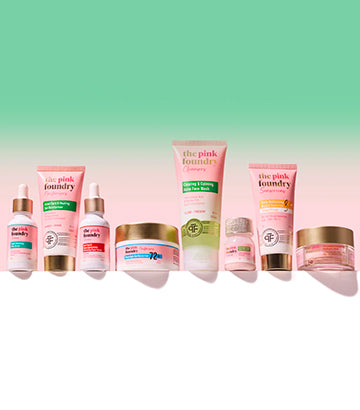Isohexadecane in Skincare

Introduction
Isohexadecane is a versatile synthetic ingredient that serves as a cleansing agent, solvent, texture enhancer, and skin conditioning agent. While it is commonly used to improve the texture of formulas, isohexadecane imparts a non-greasy, lightweight, silky feel on the skin and is known for its powder-like finish. Its dry, yet non-drying nature makes it a preferred option for products catering to oily skin.
What is isohexadecane?
Isohexadecane is a widely used ingredient in cosmetic and personal care products, mainly as an emollient, a solvent, and a texture enhancer. It is predominately used in moisturisers, cleansers, makeup and sunscreens to improve the feel and spreadability of the formulation.
This clear, colourless hydrocarbon does not mix with water and has a very low likelihood of causing irritation to the skin. It is a branched isomer of hexadecane, which is obtained from petroleum. Though typically safe for use, some individuals may have sensitivity or experience irritation.
What does isohexadecane do in skincare products?
Isohexadecane is an effective, versatile ingredient used in most cosmetics and skincare products that is able to perform many functions. Being a non-greasy and light emollient, it aids in preventing and alleviating natural dryness. This makes it an ideal ingredient in moisturisers and body lotions due to its ease of use. Also, isohexadecane provides products with improved properties regarding layering and application, giving them a smooth, silky feel. This property extends its applicability in foundation, sunscreen, and anti-ageing applications by enhancing the overall experience.
Isohexadecane benefits in skincare
While isohexadecane is commonly used as a basis in cosmetics, it has been observed that it has many other properties. Below are several positive isohexadecane characteristics:
- Lightweight moisturiser: The effect is the same with isohexadecane since it has a light moisturising effect on the skin but does not leave any greasy or moist feeling. When used in moisturisers, it creates a thin and non-occlusive layer, which is perfect for oily or combination skins. Such that the skin remains moisturised without the greasy look and feel.
- Non-comedogenic: Isohexadecane is a non-comedogenic agent that does not clog pores, making it suitable for acne-prone skin. It helps in controlling the skin to be neither too oiled nor too dry without causing any pimples. This makes for comfort when applying moisture without any skin irritation.
- Silky, smooth feel: Isohexadecane enhances the consistency of the product and imparts a velvety texture to the skin. It improves the ease of use of products and promotes a more uniform coating. That way, it facilitates the use of products on the skin by ensuring better adhesion.
- Quick absorption: Since isohexadecane absorbs quickly, it can be used under makeup or other cosmetic products without adding sheen. It hydrates but is not heavy. This gives a light, comfortable feeling without being sticky.
- Water-resistant barrier: Isohexadecane helps to some extent with water resistance, and thus can improve the wear of cosmetics and skin care products. It has an emollient nature that forms a moisture-retaining barrier. Thus, your makeup will not go out of place.
Precautions while using isohexadecane
Although it is safe to use in skincare products, there are some precautions that should be observed in order to protect oneself from undue skin-related risks. A few of the important precautions are given below:
- Patch test products: Isohexadecane does not normally cause irritation in the skin, but that does not mean that certain individuals will not experience irritation from repeated use. One should carry out a patch test for isohexadecane-contaminated products for 48 hours in order to check for any reactions.
- Eye protection: Do not roll or splash isohexadecane, as it may accidentally get into the eyes. Rinse the eye thoroughly with running water, and if irritation persists after washing, seek medical attention.
- Disposal: Products containing this ingredient should be discarded with consideration. Remember not to throw it out into water systems because it can be hazardous to the aquatic environment.
Conclusion
The use of isohexadecane on the skin is safe if done properly. The molecules of this ingredient are big enough to avoid penetration into the skin. It is also not associated with causing acne or blemishes, as it is non-comedogenic. In order to determine whether the product has any side effects, a patch test is recommended.

